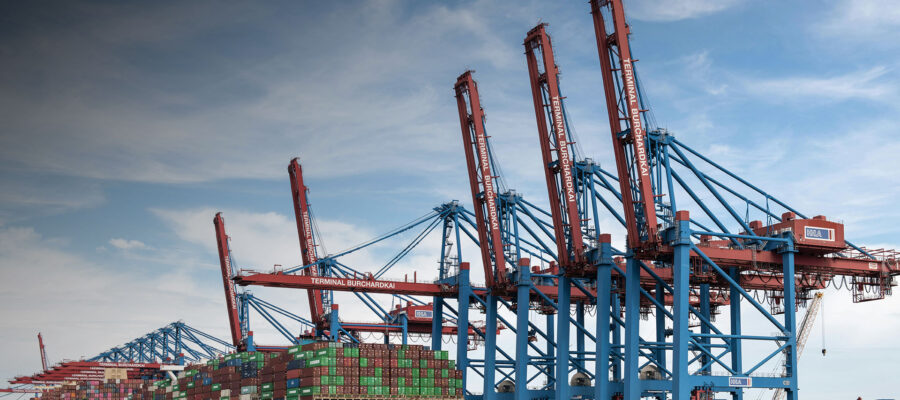This post has already been read 25355 times!
We hear talk about them all the time. We are told we need one. But what exactly is a supply chain network?
A quick look at the evolution of networks tells the story and highlights the differences between true digital supply chain networks and what are often called supply chain networks, but in reality are a world away.
The Beginnings of Digital Networks
Just like social networks of friends, family, and acquaintances existed long before digital social media platforms were invented, supply chain networks already exist too. Digital social media platforms when first introduced made it much easier for us to communicate and collaborate with our social networks. They acted as a turbocharger on what we were already able to do through other means. They unlocked previously impractical capabilities of what we can do today.
Do you remember, for example, how you shared a photo of the view from your breakfast table on the first day of your vacation with everyone you knew before Facebook was a staple?
Exactly, you didn’t!
Before the big digital social media platforms were a thing, we either didn’t do some of what we today take for granted, or we relied on point solutions. Some solutions allowed us to ask our contacts to log in to a platform of our choice to see our latest photo album. Other solutions allowed our connections to update their own contact details in our address book, but not share the details with each other.
What is a Digital Supply Chain Network? Many supply chain networks are not really networks at all, but rather hub-and-spoke solutions. Share on XThese one-to-many solutions ultimately faded away in favor of digital social media platforms, since they were inherently hub-and-spoke solutions providing some value for the initiating party, but questionable benefits to everyone else.
Supply Chain Networks
Let’s first understand what the main activities are that take place in a supply chain network, or more accurately a supply chain ecosystem.
At the most fundamental level, organizations must communicate with everyone from manufacturing and warehousing to transportation partners, freight forwarders, distributors, retailers, and others. We send orders, confirm those orders, notify when the shipment is scheduled, and send invoices before the actual movement of goods takes place.
Each party typically leverages its own preferred point solutions, some rather sophisticated solutions, and others very basic. Efforts have been made to integrate between some of the largest solution suites typically leveraged by large organizations, but as you move down the line, we typically end up relying on spreadsheets, emails, phone calls, and various file-sharing solutions.
Quite quickly you realize there’s a need to collaborate on the details of many orders. Then you want to provide an order forecast, then you want a promise or confirmation on the order, then you need to schedule pick-up and delivery of the shipment, etc. Ultimately you want to manage and optimize across all your buyers… and so on.
The industry analyst firm Gartner coined the term “Multienterprise Supply Chain Business Networks” (MESCBN)” and defined it as “a community of trading partners — of any tier and type within a network — that needs to coordinate and execute supply chain processes across multiple enterprises”.
“[A multi-enterprise network is] a community of trading partners — of any tier and type within a network — that needs to coordinate and execute supply chain processes across multiple enterprises”.
Gartner
The key is that the community of companies carry out business processes that extend across multiple parties or enterprises, which includes most supply chain business processes.
Webinar: How a network benefits CPG Suppliers by improving margin and reducing workload
According to the report, “Multienterprise supply chain business networks (MESCBNs) are an essential technology component to a successful high-maturity, digital transformation. Executives must understand that their company needs to operate within such networks to stay competitive — in other words, minimize risk, increase efficiency, reduce cost, and capitalize on opportunities.”
While all of that is true, it doesn’t address what you truly need to be successful in achieving the ultimate supply chain goal of delivering the highest customer value at the lowest possible cost.
That’s Great in Theory, But the Reality Today…
In today’s business landscape, it is almost absurd to think that we’ll be able to drive any substantial optimization as long as each party is expecting everyone else to comply with their stand-alone hub-and-spoke point solution. In an effort to drive our own internal efficiency, we force our ecosystem partners via these one-to-many systems to comply with our processes and solution choices with little regard for the extra effort imposed on them. Reminiscent of the days before the use of digital social media platforms became widespread, your business partners expect you to happily log in to their platform of choice regularly to collaborate with them on their terms with little added benefit to you. Most organizations ignore the fact that their ecosystem partners are forced by them and many others to access a whole range of disparate systems on a regular basis just to keep up with business.
The more point solutions deployed, the more friction we add into the supply chain ecosystem, which inevitably drives up cost and lead time harming everyone in the process.
So, what is the solution? First of all, there have to be benefits for all participants.
A true digital supply chain network does that.
"The more point solutions deployed, the more friction we add into the supply chain ecosystem, which inevitably drives up cost and lead time harming everyone in the process." -Peter Nilsson Share on XFor instance, One Network’s Digital Supply Chain Network™ is a complete platform that unites all trading partners on a single, real time, customer-centric platform in the cloud. Like a digital social media platform, it is a many-to-many platform, where each trading partner is empowered with real-time visibility and actionability, across all of their own trading partners. They can plan and execute, informed by real-time data, and manage the supply chain from raw material suppliers to the end customers. No extra onboarding or systems required.
These capabilities are key and define a supply chain network. So…
If you find you need to re-onboard for other business relationships, or to leverage other capabilities…
If you can’t plan and execute on the same platform…
If you are still relying on spreadsheets, chat, and phone calls…
Then it might be time to rethink your supply chain platform. These are sure signs that you are not on a true digital supply chain network, and are using a pseudo-network, the equivalent of a photo-sharing portal.

- 3 Foundations for an Effective Multi-Enterprise Supply Chain Network - July 31, 2024
- What is a Digital Supply Chain Network? - June 25, 2024
- 4 Types of Supply Chain Control Towers - February 8, 2023



